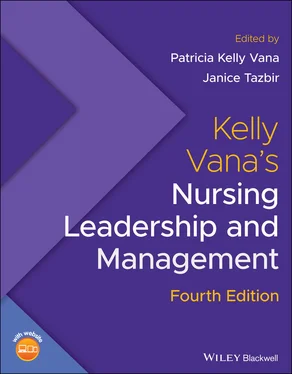Table 3.3 Historically Significant Events in the History of Nursing Compiled by B. Lusk
| 1846 |
First public use of anesthesia during surgery: allowed more complex surgeries and thus required more skilled nursing. |
| 1851–1854 |
Crimean War: English aware of poor nursing care for troops. Nightingale and 38 volunteer nurses sent to English army hospitals in Turkey, near the Crimean peninsula. |
| 1860 |
Nightingale establishes first training school for nurses in London, England |
| 1863 |
International Red Cross established in Geneva, Switzerland. |
| 1873 |
First “Nightingale Type” Nurse Training Schools opened in the U.S. |
| 1880s |
Germ theory of disease developed |
| 1899 |
International Council of Nurses founded. |
| 1893 |
National League for Nursing (NLN) founded. Lillian Wald founds the Visiting Nurse Service of New York. |
| 1896 |
American Nurses Association (ANA) founded. |
| 1902 |
Lina Rogers Struthers hired, in New York, as the first U.S. school nurse. |
| 1908 |
National Association of Colored Graduate Nurses founded; merged with the ANA in 1951. |
| 1909 |
First university‐based school of nursing opened at the University of Minnesota. |
| 1912 |
Public Health Nurses Association founded; merged with the NLN in 1951. |
| 1917 |
Standardized curriculum for nursing developed by NLN. |
| 1920 |
Women gained the vote. |
| 1922 |
Sigma Theta Tau founded at Indiana University. |
| 1923 |
Goldmark Report on Nursing Education. Mary Breckenridge founds the Frontier Nursing Service. |
| 1924 |
First doctoral program for nurses, in education, opened at Teacher's College, Columbia University, New York. |
| 1930s |
Great Depression: Graduate nurses began staffing hospitals; closure of some hospital‐based training schools; start of hospital insurance programs. |
| 1934 |
Grading Committee Report on Nursing Education. |
| 1942 |
Penicillin (discovered in 1928) starts to be used to treat infections. |
| 1945 |
Cadet Corps nursing program initiated. |
| 1946 |
Hill‐Burton Act. Infusion of money into hospital construction. |
| 1948 |
Brown Report on Nursing Education. |
| 1950s |
Beginning of associate degree education for nurses, closure of some hospital diploma training schools. |
| 1953 |
National Student Nurses Association founded. |
| 1960s |
Development of specialized hospital patient units for coronary and critical care. Growth of nursing specialization. |
| 1964 |
Nurse Training Act. Infuses Federal money into nursing and nursing education. |
| 1965 |
First Nurse Practitioner program established at University of Colorado; Development of Medicaid and Medicare programs—expands insured health care. |
| 1970s |
Clinical Nurse Specialist role developed. |
| 1971 |
American Assembly for Men in Nursing founded. |
| 1974 |
Florence Wald founds first U.S. Hospice in Connecticut. |
| 1986 |
National Center for Nursing Research founded. |
| 1993 |
National Institute of Nursing Research, one of the National Institutes of Health, founded. |
| 2004 |
Doctorate in Nursing Practice endorsed by member schools of the American Association of Colleges of Nursing. |
| 2008 |
Consensus model for Advance Practice Registered Nurses developed by the National Council of State Boards of Nursing and the APN Consensus Work Group. The roles are: Certified Nurse Midwife, Certified Registered Nurse Anesthetist, Clinical Nurse Specialist, and Certified Nurse Practitioner. |
| 2010 |
Affordable Care Act—expands health insurance. |
1 Nursing history must be interpreted through the contexts of gender, society, science, and place.
2 In 1873, three nurse training schools, using Nightingale's principles for nursing education, were founded in the U.S.
3 Scientific progress required nurses' more extensive education.
4 Early nursing contributions to society's health included nursing knowledge‐based care within hospitals and nursing public health initiatives in the wider community.
5 Public health nursing was central to the early professional development of nursing.
6 Nursing professional organizations were initiated soon after formal nursing education began.
7 During the Great Depression of the 1930s, nursing practice moved from private duty nursing to hospital staff nursing.
8 The move from hospital training schools for nurses to collegiate nursing education accelerated in the 1950s and 1960s.
9 Nursing theories were foundational to nursing science research.
10 Advanced Practice Nursing roles have had a long history.
Nursing history
Professional identity
Nurse Training Schools
Visiting Nurses
Henry Street Settlement
Nursing technicians
Image of nurses
Ethics
1 Nurses who had graduated from nurse training schools largely moved from private duty nursing to hospital staff nursing during the 1930s because of which of the following?Medical care was becoming increasingly complex and more graduate nurses were needed.Student nurses' liability insurance would not cover student nurses in the role of primary caregivers.Graduate nurses were cheaper for hospitals than running their own nurse training schools.Student nurses' education was moving away from hospital training schools to colleges and universities.
2 The public views nurses more favorably during which of the following times?Complimentary television shows.War.Infectious disease outbreaks.When the results of the Gallop Poll, which showed nurses rate highest in ethics, is released.
3 The movement toward formal education for nurses in the 1870s came about for all the following reasons EXCEPT for which of the following?Rapid industrialization.Expansion of scientific knowledge, such as anesthesia and antisepsis.Expansion of hospital building.Women's desire for more independence.
4 In the nineteenth century, during the early years of nurse training schools, student nurses usually had classes during which of the following times?In 3 month blocks every year.After their 12 hr shift on the wards.On their day off from clinical work.After their 6 hr shift on the wards.
5 Which of the following professional nursing organizations was NOT one of the first nursing organizations?American Society of Superintendents of Training Schools for Nurses—now the NLN.Sigma Theta Tau International Honor Society of Nursing—now Sigma.National Organization of Public Health Nurses.Nurses' Associated Alumnae of the United States and Canada—now the ANA.
6 Which scientific discovery came first?Anesthesia.X‐Rays.Antisepsis.Penicillin.
7 What was one outcome of the Hill‐Burton Act of 1946?More nurses were needed.More acute care patients were admitted to hospitals.Hospital insurance could be more readily obtained.Fewer Medicaid recipients were admitted to hospitals.
8 After World War II, several factors converged to worsen the nursing shortage. Which of the following was NOT a factor?Nurses wanted to leave nursing to get married.Military nurses didn't wish to return to the constraints and rules of civilian nursing.Nurses wanted to have children and start a family that had been delayed by the war.The military wounded required an infusion of nurses to care for them.
Читать дальше












